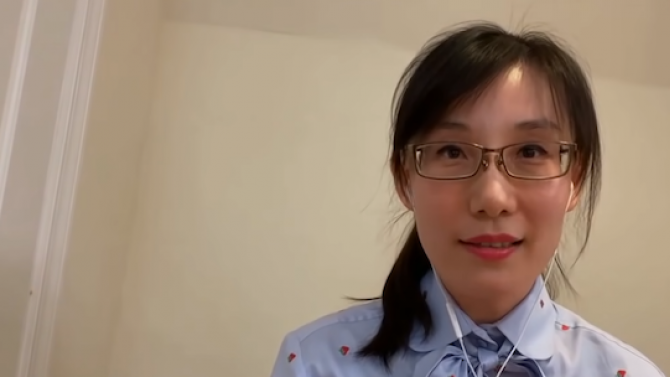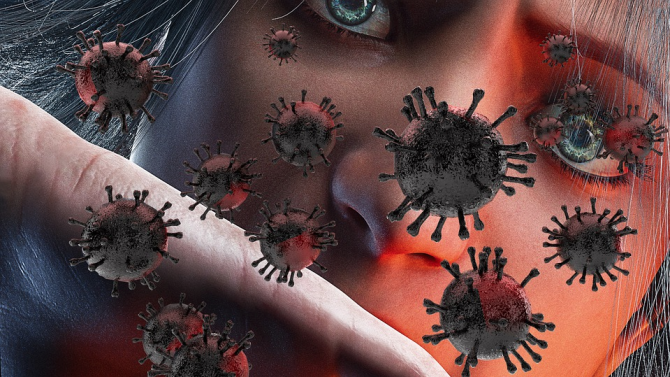-
04 август 2020 14:25
- 134476
- 56

Ли-Мен Ян е китайска вирусоложка, която доби световна популярност преди няколко седмици, когато успя да избяга от Китай и да се установи в Съединените щати.
Само преди няколко часа Ли-Мен Ян направи ексклузивно изявление пред световната общност, в което заяви, че настоящият коронавирус е бил сътворен във военна лаборатория в Китай и всичко, което твърдят в Пекин, е абсолютна лъжа.
По думите ѝ китайското правителство се е опитало да стори всичко възможно, за да ѝ попречи да разпространи информация за вируса и по този начин да спаси множество животи.
Тя сподели още, че към края на 2019 г. прекият ѝ началник ѝ заръчал да направи тайно разследване във връзка с естеството на вируса.
Започвайки да изучава патогена, Ли-Мен Ян е забелязала определени особености във вируса, които ѝ подсказали, че е бил създаден в лабораторни условия, а обясненията на китайското правителство, че COVID-19 е плъзнал от пазара в Ухан е просто измислена "сцена от сюжета".

Последвайте канала на

Повече за Коронавирус

- най-ново: Вижте последните новини
- лесни стъпки: Как да се предпазим?
- просто ръководство: Какви са симптомите?
Свързани новини

Увеличава се броят на заболелите от сезонен грип и Covid-19 в Гърция
10 януари 202506:56

Нова болест, по-страшна от коронавируса: какво се знае за новата ситуация в Китай?
06 януари 202511:45

Пет години след началото на пандемията СЗО отново иска от Китай информация за произхода на COVID-19
30 декември 202422:37

COVID-19 създава клетки убийци, които атакуват тумори
20 ноември 202415:04

Изследване откри кръвни маркери, свързани със сърдечносъдови проблеми при дълъг Ковид
31 октомври 202422:40

В Кипър започва ваксинационната кампания срещу Covid-19 и сезонния грип
16 октомври 202408:06

Ръст на случаите на грип и COVID-19 в Гърция
15 октомври 202416:05
,fit(968:545))
Лудогорец надви швейцарския шампион с гол в последната минута
,fit(968:545))
1/4-финал №3 на Купата на България: Нефтохимик 2:0 Локомотив! Следете мача ТУК!
,fit(968:545))
Томаш: До 1-2 дни ще имаме нови футболисти
,fit(968:545))
Отлични новини! ФИФА отмени наказанията на Ботев (Пловдив)
,fit(968:545))
Душан Косич: Фокусиран съм отборът да запази елитния си статут
)
Четвърти футболист напусна ЦСКА - София за последните 24 часа
Коментари 56
Добави2021.05.12 | 12:24
2024.04.11 | 15:49
2022.08.06 | 06:57
2022.06.10 | 09:05
2021.04.04 | 16:36
2021.04.04 | 16:28
2021.04.04 | 16:16
2021.04.04 | 16:15
2021.04.04 | 15:58
2020.08.05 | 11:54
2020.10.22 | 06:04
2020.09.07 | 22:59
Добави коментар
Водещи новини

Бизнесът ще получи компенсации за скъпия ток за период от три месеца
10 януари 202517:39

Кирил Петков за думите на сенсея: Мръсната машина видя колко много хора ни подкрепят и веднага ме удари
10 януари 202515:07

Цветлин Йовчев за Кирил Петков и сенсея: Не трябва да обръщаме чак толкова голямо внимание на тази случка
10 януари 202517:40

"Днес и утре са важни дни": До неделя става ясно ще има ли кабинет на ГЕРБ, БСП и ИТН
10 януари 202514:47

Атанас Зафиров: Искрено се надявам другата седмица България да има редовно правителство
10 януари 202515:09

Председателката на КЗП забрани със заповед мобилните оператори да вдигат цените
10 януари 202517:00

Осъдиха Доналд Тръмп
10 януари 202517:15

Домът на Мел Гибсън изгоря в Лос Анджелис, актьорът бесен: Плащаме за гела за косата на губернатора
10 януари 202515:39

Тревожно: Поколението Z почти заличи умение, ползвано до съвършенство от предците ни в продължение на 5500 години
10 януари 202516:06


2024.05.31 | 11:12